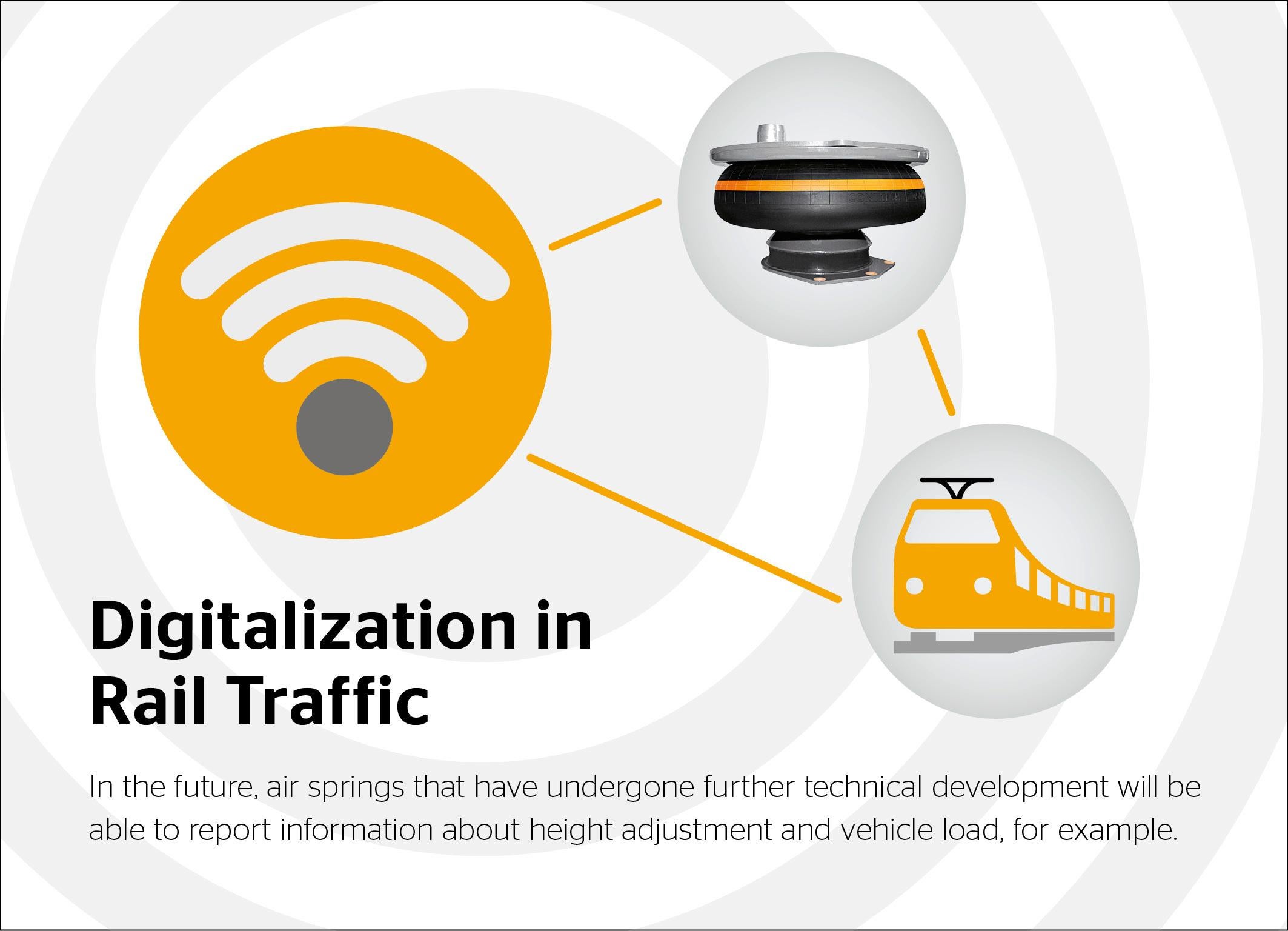
Digitalisation is a pioneering trend, and not just for the passenger car industry. It is playing an increasingly important role in the development of new transportation concepts in the rail vehicle industry as well. "Digitalisation can make rail-bound mobility even more attractive and cost-effective for operators and passengers," says Olaf Philipp, head of rail business at ContiTech Air Spring Systems. "We can imagine that, with the right technology, accelerations and movements within the air spring can be measured, digitally recorded, and made available to the customer."
The information that is gathered can act as a helpful support for the drivers of rail vehicles, as well as for planning and monitoring traffic in its entirety. Air springs that have undergone further technical development will be able to report information about height adjustment and vehicle load, for example, directly to the vehicle in the future. However, the data gained in this way would also be forwarded to central offices and help to map the rail network in order to plan repair work. Specific statements about the service life of components would be possible with this information in the future.
With systems for primary and secondary suspension, as well as rubber-metal parts, e.g. for force transmission, ContiTech is a leading global partner to the rail vehicle industry. In the development of complete suspension systems and holistic solutions, the company works together with the leading rail vehicle manufacturers, and develops products that ensure more safety and comfort in railway engineering.
"As part of the Continental Corporation, we have access to innovative technologies in order to develop such trend-setting solutions," says Philipp. "Our customers from the rail industry benefit from this internal cooperation." At present, digitalisation is one of the most important issues for the automotive industry. Continental is working intensively on making vehicles more intelligent. By means of interconnectivity, cars can communicate with each other, with other road users, and with the infrastructure. "This is a concept that could easily be applied to railway engineering as well," declares Philipp.
